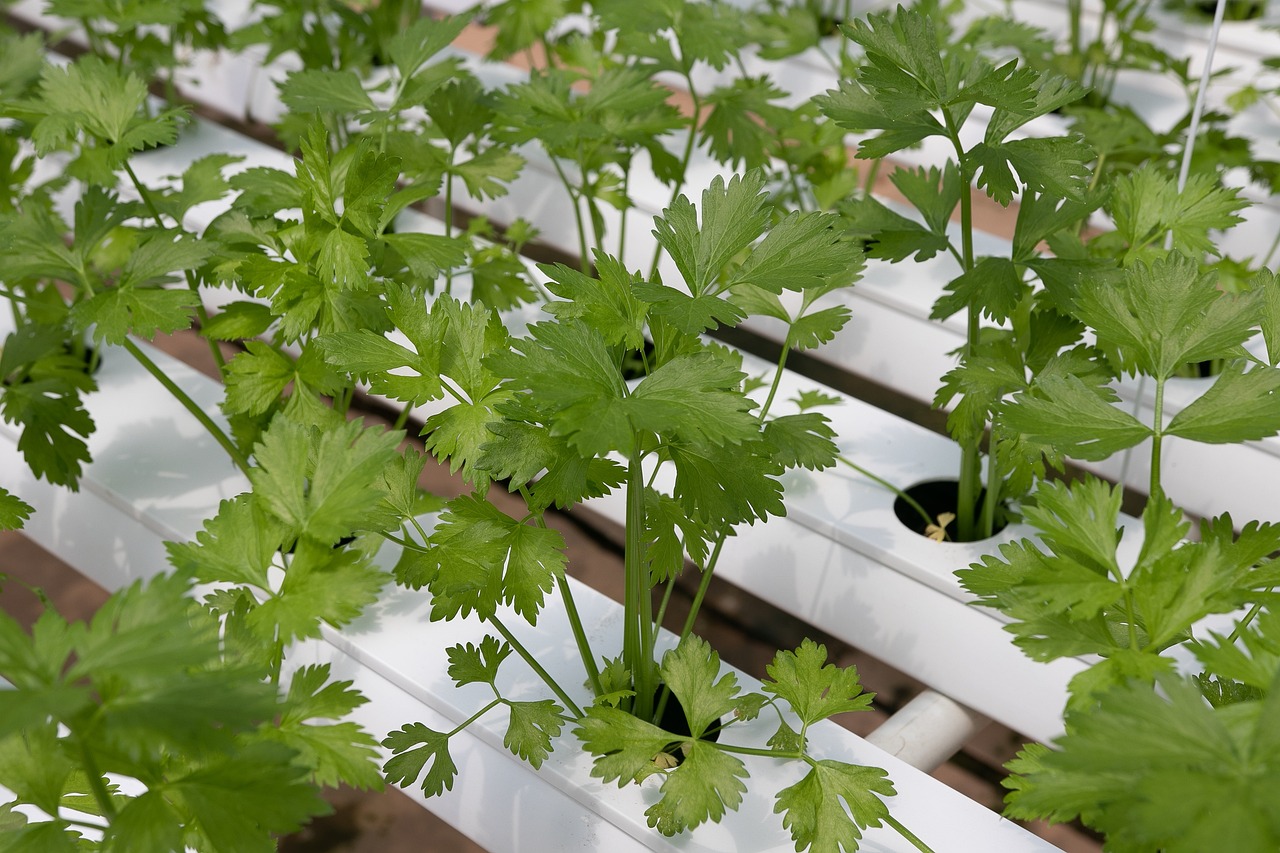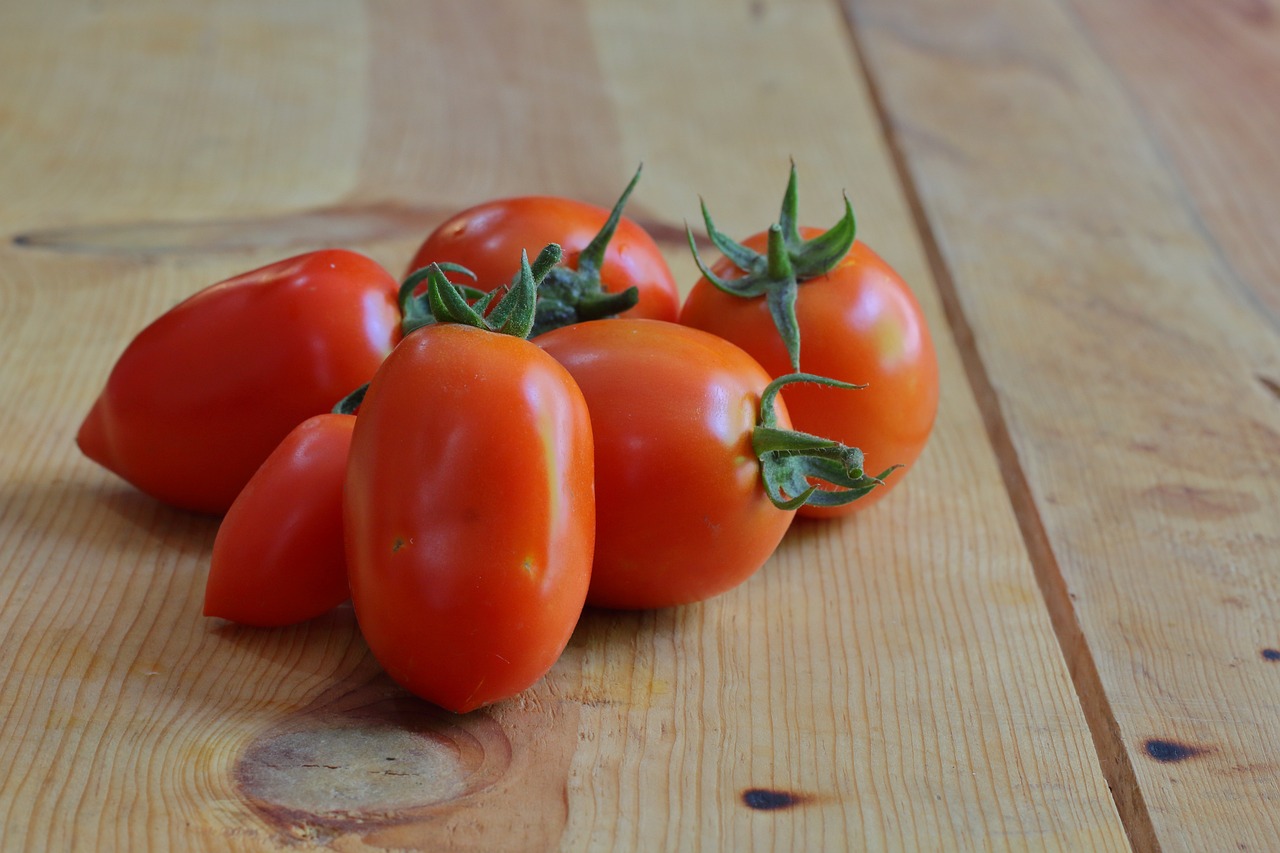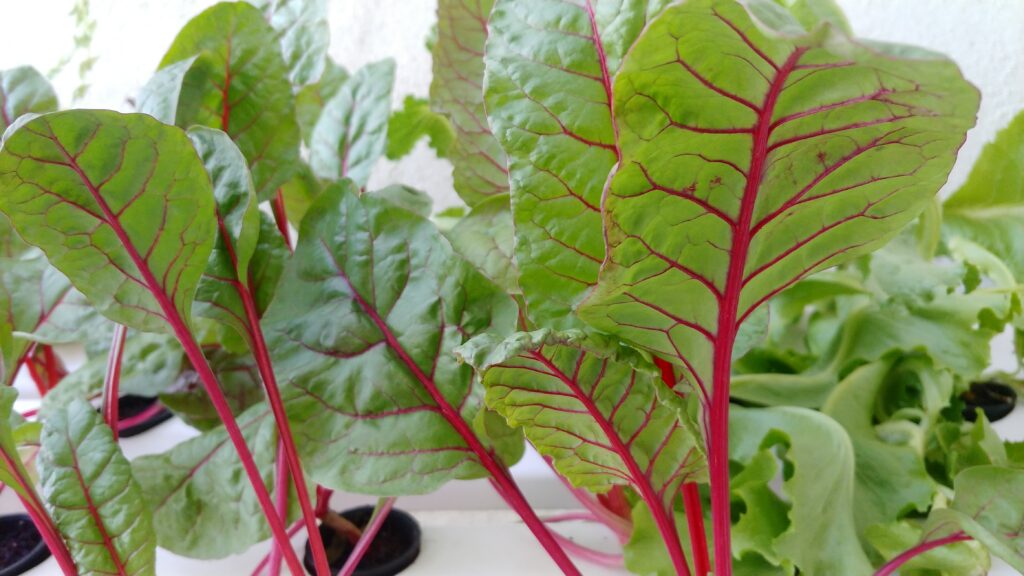Hydroponic systems have gained popularity in recent years for their ability to grow plants without soil, using nutrient-rich water instead. However, like any method of cultivation, hydroponic systems come with their fair share of challenges. In this article, we will explore three common issues that can arise in hydroponic systems. From nutrient imbalances to pest management, we will delve into the potential hurdles that hydroponic growers may encounter and provide practical solutions to overcome them. So, if you’re interested in learning how to tackle these problems and ensure the success of your hydroponic garden, keep reading! Hydroponic systems offer numerous advantages for growing plants, including increased control over nutrient delivery and faster growth rates. However, like any growing method, hydroponics comes with its own set of challenges. In this article, we will explore several common issues that can occur in hydroponic systems and discuss how to address them.

Nutrient Imbalance
pH Fluctuations
Maintaining the proper pH level in a hydroponic system is crucial for plant health and nutrient uptake. pH fluctuations can occur for various reasons, such as changes in water quality, nutrient dosing, or biological processes in the system. When the pH deviates significantly from the optimal range (usually between 5.5-6.5 for most plants), it can lead to nutrient imbalances and deficiencies.
To address pH fluctuations, regularly monitor the pH levels using a reliable pH meter or test kit. Adjust the pH by adding pH-up or pH-down solutions, depending on whether the pH needs to be increased or decreased. It’s important to make gradual adjustments and retest the pH after each addition to avoid overshooting the target range.
Nutrient Deficiencies
In hydroponics, plants rely on nutrient solutions for their growth and development. However, nutrient deficiencies can occur if the solution does not contain the necessary elements in the right proportions. Common nutrient deficiencies in hydroponics include nitrogen, phosphorus, potassium, calcium, and magnesium.
To prevent nutrient deficiencies, ensure that you are using a well-balanced nutrient solution specifically formulated for hydroponic systems. Follow the recommended dosage instructions and regularly monitor the nutrient levels using an electrical conductivity (EC) meter. Adjust the nutrient solution as needed to maintain optimal nutrient levels for healthy plant growth.
Excessive Nutrients
While nutrient deficiencies can be detrimental to plants, excessive nutrient levels can be equally damaging. Overfeeding plants with excessive nutrients can lead to nutrient imbalances, toxicity, and impaired growth. Additionally, high nutrient concentrations can negatively impact the overall water quality in the system.
To prevent excessive nutrient levels, carefully follow the recommended dosage instructions for your specific nutrient solution. Avoid the temptation to increase nutrient concentrations beyond what is necessary for healthy plant growth. Regularly monitor the nutrient levels using an EC meter and make adjustments as needed to maintain a balanced nutrient solution.
Disease and Pest Infestation
Root Diseases
Root diseases are a common challenge in hydroponic systems, as the roots are constantly exposed to water and nutrient solutions. Pythium, Fusarium, and Phytophthora are common root diseases that can cause root rot, stunted growth, and even plant death.
To prevent root diseases, practice good hygiene and maintain a clean growing environment. Regularly inspect your plants’ root systems for signs of disease, such as brown or mushy roots. If root diseases are detected, consider using beneficial microbial products or fungicides specifically formulated for hydroponics.
Fungal Infections
Fungal infections can occur in hydroponic systems when the environment becomes too humid or when plant surfaces remain wet for extended periods. Common fungal infections include powdery mildew and gray mold, which can both inhibit plant growth and reduce yield.
To prevent fungal infections, maintain proper humidity levels in your growing area and ensure adequate air circulation. Avoid overcrowding plants, as this can create a humid microclimate conducive to fungal growth. If fungal infections occur, consider using organic fungicides or implementing cultural practices such as removing infected plant material and improving ventilation.
Insect Infestation
Just like in traditional soil-based gardening, hydroponic systems can also be susceptible to insect infestations. Common pests in hydroponics include aphids, thrips, whiteflies, and spider mites. These pests can damage plant tissue, feed on sap, and transmit diseases.
To prevent insect infestations, regularly inspect your plants for signs of pests, such as discolored leaves, sticky residue, or visible bugs. Implement preventative measures such as using insecticidal soaps or natural predators, like ladybugs, to control pest populations. Additionally, maintaining a clean growing environment and removing any weeds or debris can help reduce the likelihood of insect infestations.
Temperature and Humidity Control
Temperature Extremes
Temperature plays a vital role in hydroponic systems, as it directly impacts plant metabolism and nutrient uptake. Extreme temperatures, whether too hot or too cold, can stress plants and affect overall growth and productivity.
To ensure proper temperature control, use a reliable thermometer to monitor the temperature in your growing area. Provide adequate insulation and ventilation to maintain stable temperatures. If necessary, consider using cooling or heating systems to regulate temperature extremes. Additionally, selecting plant varieties that are well-adapted to your specific climate can help mitigate temperature-related issues.
Humidity Fluctuations
Humidity levels in hydroponic systems can fluctuate due to various factors, including environmental conditions, plant transpiration, and water evaporation. High humidity can create a favorable environment for fungal infections, while low humidity can lead to excessive transpiration and water stress in plants.
To control humidity levels, use a hygrometer to monitor the relative humidity in your growing area. Implement measures to increase humidity, such as placing trays of water or using humidifiers, in dry environments. Conversely, use dehumidifiers or improved ventilation to decrease humidity in excessively humid environments. Maintaining stable humidity levels will help promote healthy plant growth and minimize the risk of disease.
Inadequate Ventilation
Proper ventilation is essential in hydroponic systems to ensure an adequate supply of fresh air, remove excess humidity, and prevent the buildup of harmful gases. Inadequate ventilation can lead to poor air circulation, increased humidity, and a higher risk of disease and pest infestations.
To improve ventilation, make sure your growing area has sufficient intake and exhaust vents. If necessary, use fans or ventilation systems to enhance airflow within the system. Regularly clean and maintain your ventilation equipment to prevent blockages and ensure optimal performance.
Water Quality
Contaminants
Water quality is crucial in hydroponics, as plants directly uptake nutrients and water from the solution. Contaminants present in the water, such as heavy metals, chlorine, or residual pesticides, can negatively affect plant health and growth.
To ensure good water quality, start with a reliable water source or use a water filtration system to remove potential contaminants. Test your water regularly for pH, EC, and the presence of any harmful substances. If necessary, use water purification methods, such as reverse osmosis or carbon filters, to improve water quality before using it in your hydroponic system.
Algae Growth
Algae growth is a common problem in hydroponic systems and can occur when light and nutrients are present in excess. Algae can compete with plants for nutrients, block light, and create an undesirable environment for healthy plant growth.
To prevent algae growth, take measures to reduce the amount of light that reaches the nutrient solution. Covering the reservoir or using opaque containers can help reduce light exposure. Additionally, avoid overfertilizing your plants, as excess nutrients can provide a food source for algae. If algae growth does occur, physically remove it from the system and consider using hydrogen peroxide or other algaecides to control the problem.
Hard Water
Hard water, which contains high levels of minerals such as calcium and magnesium, can create several challenges in hydroponic systems. These minerals can accumulate in irrigation lines, clog drippers, and affect nutrient availability to plants.
To mitigate the effects of hard water, consider using water softeners or filtration systems that remove excess minerals. Regularly clean and monitor your irrigation lines to prevent clogging. If necessary, periodically flush your system with clean, nutrient-free water to remove any mineral buildup.

Root System Problems
Root Rot
Root rot is a common issue in hydroponics and often occurs due to overwatering or poor drainage. Inadequate oxygen levels around the root zone can lead to root suffocation and the proliferation of harmful bacteria or fungi.
To prevent root rot, ensure that your hydroponic system has proper drainage and avoid overwatering your plants. Allow the growing medium to dry out between irrigation cycles to encourage the roots to receive oxygen. If root rot does occur, remove affected plants and sanitize your system. Consider adding beneficial microbes or hydrogen peroxide to help combat harmful pathogenic organisms.
Overwatering
Overwatering is a common mistake in hydroponic systems, as the absence of soil makes it challenging to judge moisture levels accurately. Overwatering can lead to oxygen deprivation, nutrient leaching, and the development of root diseases.
To avoid overwatering, allow the growing medium to dry out before watering again. Test the moisture content by sticking your finger or a moisture probe into the growing medium. If it feels moist, hold off on watering until it becomes slightly dry. Adjust the watering frequency as needed based on your plants’ specific requirements and environmental conditions.
Root Clogging
Root clogging can occur in hydroponic systems when the roots grow excessively and block irrigation lines or emitters. This can disrupt nutrient uptake, inhibit water distribution, and lead to stress in the plants.
To prevent root clogging, regularly inspect your system for any signs of root mass buildup. Consider using larger diameter irrigation lines or emitters to minimize the risk of clogging. If root clogging does occur, gently remove the obstructing roots and clean the affected areas. Proper maintenance and monitoring will help ensure a healthy root system and uninterrupted nutrient delivery.
Lighting Issues
Insufficient Light
Proper lighting is essential for photosynthesis and healthy plant growth in hydroponic systems. Insufficient light levels can lead to weak, leggy plants, reduced yield, and delayed flowering.
To ensure sufficient light, calculate the light requirements for your specific plant species and growth stage. Use high-quality grow lights with appropriate light intensity and spectrum. Position the lights at the correct distance from the plants to provide optimal coverage and intensity. Regularly monitor the light levels using a light meter and adjust the light duration and intensity as needed.
Light Intensity
While insufficient light can be detrimental to plant growth, excessive light intensity can also cause problems in hydroponic systems. High light intensities can lead to heat stress, leaf burn, and reduced photosynthetic efficiency.
To manage light intensity, use light reflectors or diffusers to distribute the light more evenly and reduce hot spots. Consider using shade cloths or adjusting the light height to reduce the intensity if necessary. Monitor the temperature around the plants and make adjustments accordingly to maintain a balanced, optimal light intensity.
Incorrect Light Spectrum
Plants have specific light spectrum requirements at different growth stages. The incorrect light spectrum can adversely affect plant development, flower production, and overall yield in hydroponic systems.
To provide the correct light spectrum, select grow lights that emit a spectrum suitable for your plant species and growth stage. Full-spectrum LED grow lights are a popular choice, as they can be customized to match specific plant requirements. Consult the manufacturer’s specifications or seek advice from experts to ensure you are providing the optimal light spectrum for your plants.

Equipment Malfunction
Water Pump Failure
Water pumps play a crucial role in ensuring proper water circulation and nutrient delivery in hydroponic systems. A water pump failure can lead to inadequate water flow, poor nutrient distribution, and stressed plants.
To prevent water pump failures, regularly inspect and maintain your water pump. Clean any debris or clogs that might affect its performance. Consider having a backup water pump on hand to quickly replace a malfunctioning one. Regularly test the water flow and ensure that it is consistent and adequate for your system’s requirements.
Air Pump Issues
Air pumps provide essential oxygen to the root zone in hydroponic systems. Malfunctioning air pumps can lead to inadequate oxygenation, root suffocation, and reduced plant growth.
To avoid air pump issues, regularly clean and maintain your air pump to prevent blockages or build-up of dust or debris. Check the air stones or diffusers for clogs and replace them if necessary. Have spare air pumps available to quickly replace any faulty ones. Monitor the bubbles and airflow and ensure that they are sufficient to provide proper oxygenation to the roots.
Faulty Timers
Timers are used to automate various functions in hydroponic systems, such as lighting schedules, water pump cycles, or nutrient solution dosing. A faulty timer can disrupt the planned cycles, leading to inconsistent or inadequate delivery of light, nutrients, or water.
To prevent issues with timers, regularly check and test their functionality. Set up a backup power source, such as a battery-operated timer or an uninterrupted power supply (UPS), to avoid disruptions in case of power outages. Check the schedule and timing regularly to ensure that the timer is functioning correctly and that all system components are operating as intended.
Lack of Nutrient Monitoring
Inaccurate Testing
Accurate nutrient monitoring is crucial for maintaining a well-balanced nutrient solution in hydroponic systems. Inaccurate testing methods or improper interpretation of test results can lead to nutrient imbalances, deficiencies, or toxicities.
To ensure accurate nutrient monitoring, use reliable testing equipment and follow the manufacturer’s instructions. Regularly calibrate your testing instruments to maintain accuracy. Test the nutrient solution at regular intervals and adjust the nutrient levels accordingly. Consider using advanced testing methods, such as photometers or digital meters, for more precise and reliable results.
Failure to Adjust
Monitoring nutrient levels is essential, but it is equally important to take appropriate actions based on the test results. Failure to adjust the nutrient solution based on the specific requirements of your plants can lead to imbalances or deficiencies.
To prevent nutrient-related issues, regularly review the test results and adjust the nutrient solution accordingly. Familiarize yourself with the ideal nutrient ranges for your specific plant species and growth stage. Keep a record of the nutrient adjustments made and the corresponding plant responses to fine-tune your nutrient management practices over time.
Neglecting Nutrient Solution
Neglecting the nutrient solution is a common mistake in hydroponic systems. Over time, the nutrient solution can become depleted, imbalanced, or contaminated, leading to poor plant performance and reduced yields.
To maintain a healthy nutrient solution, regularly monitor its condition, including pH, EC, and nutrient levels. Top up the solution with fresh water and adjust the nutrient concentrations as needed. Periodically flush the system to remove any accumulated salts or residue. By actively managing and refreshing the nutrient solution, you can ensure optimal plant nutrition and overall system health.
Improper Plant Support
Insufficient Support
Proper plant support is crucial in hydroponic systems, especially for vining or heavy-fruited plants. Insufficient support can lead to weak plant structures, plant breakage, or reduced yield.
To provide adequate support, consider using trellises, stakes, or plant cages to help guide and support plant growth. Regularly inspect the plants and adjust the support structures as needed. Proper training and tying techniques can also help divert the plant’s energy toward fruit production and ensure a more balanced growth.
Weak Plant Structure
Weak plant structures can occur due to genetic factors, inadequate support, or suboptimal environmental conditions. Weak stems or branches can limit nutrient and water transport within the plants and make them more susceptible to breakage or pest damage.
To promote stronger plant structures, ensure that your plants receive sufficient light, nutrients, and environmental conditions conducive to robust growth. Consider providing additional support or using plant training techniques, such as pruning or pinching, to strengthen weak branches. Avoid excessive nutrient concentrations, as they can promote fast but weak growth.
Improper Trellising
Trellising is a common technique used in hydroponic systems to train and support plants, allowing them to grow vertically and maximize space utilization. However, improper trellising techniques can restrict plant growth, hinder nutrient uptake, and lead to tangled or overcrowded plants.
To trellis plants effectively, choose a trellis system suitable for your specific plant species and growth habit. Install the trellis early in the growing cycle and regularly train the plants to grow along the trellis structure. Properly space the plants to allow for adequate airflow and light penetration. Regularly inspect and adjust the trellis as needed to ensure optimal plant growth and prevent overcrowding.
Inadequate Root Oxygenation
Lack of Aeration
Roots require oxygen for respiration, and lack of oxygen leads to poor root function and increased susceptibility to diseases. Inadequate aeration can occur when there is limited air movement or when the root system becomes waterlogged.
To improve root oxygenation, ensure that your hydroponic system has sufficient air circulation. Consider using air stones or diffusers to increase oxygen transfer to the root zone. Avoid overwatering and allow the growing medium to dry out slightly between irrigation cycles. Regularly inspect the roots for signs of oxygen deprivation or waterlogging, such as browning or slimy roots, and take appropriate actions to improve aeration.
Improper Air Stone Placement
Air stones or diffusers play a critical role in oxygenating the root zone in hydroponic systems. Improper placement or inadequate number of air stones can result in uneven oxygen distribution and reduced oxygen availability for the roots.
To ensure proper air stone placement, position them evenly throughout the root system to provide optimal coverage. Avoid placing air stones too close to the plant roots, as this can disrupt nutrient uptake or damage delicate root hairs. Consider using multiple air stones or diffusers for larger systems or plants with extensive root systems. Regularly check the air stone performance and replace or clean them as needed to maintain adequate oxygenation.
Overcrowded Root System
Overcrowding of the root system can occur when plants are densely packed or have excessive root mass. An overcrowded root system can restrict oxygen availability and nutrient uptake, leading to stunted growth and reduced yields.
To prevent an overcrowded root system, provide sufficient spacing between plants to allow for proper root development. Regularly thin or trim the roots if they become excessive. Prune or remove any excessive growth that may be blocking airflow or restricting root expansion. Monitoring the root system’s health and structure will help ensure proper oxygenation and nutrient absorption for healthy plant growth.
In conclusion, hydroponic systems offer incredible opportunities for growing plants, but they also present unique challenges. Nutrient imbalances, disease, temperature control, water quality, root problems, lighting issues, equipment malfunctions, nutrient monitoring, plant support, and root oxygenation are all potential issues that hydroponic growers may encounter. By understanding these issues and implementing appropriate precautions and management strategies, hydroponic growers can optimize their systems for healthy plant growth and maximize yields. It is important to regularly monitor and maintain all aspects of the hydroponic system to ensure optimal growing conditions and minimize the risk of potential issues. With proper attention and care, hydroponic systems can provide a rewarding and productive gardening experience.





